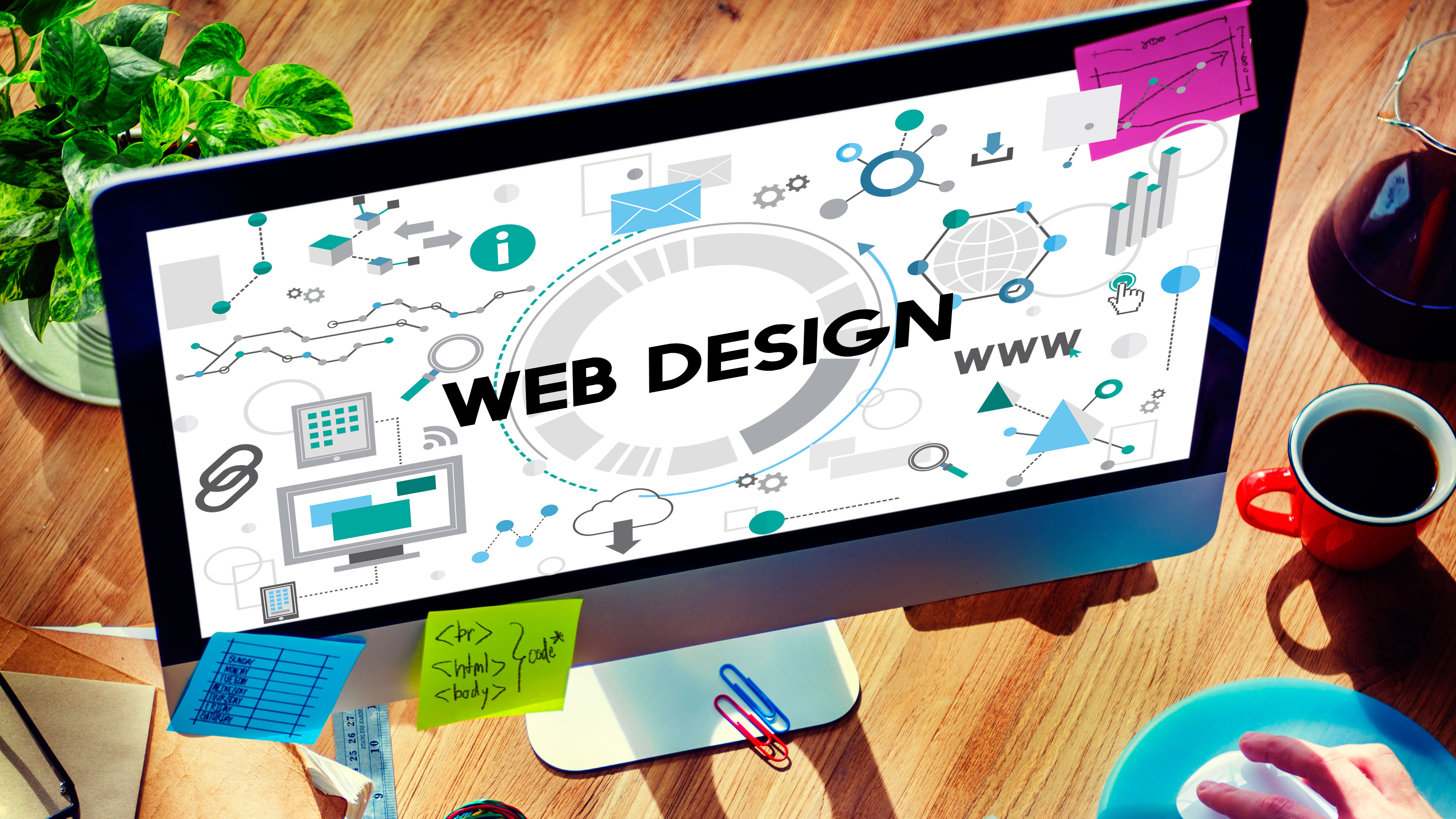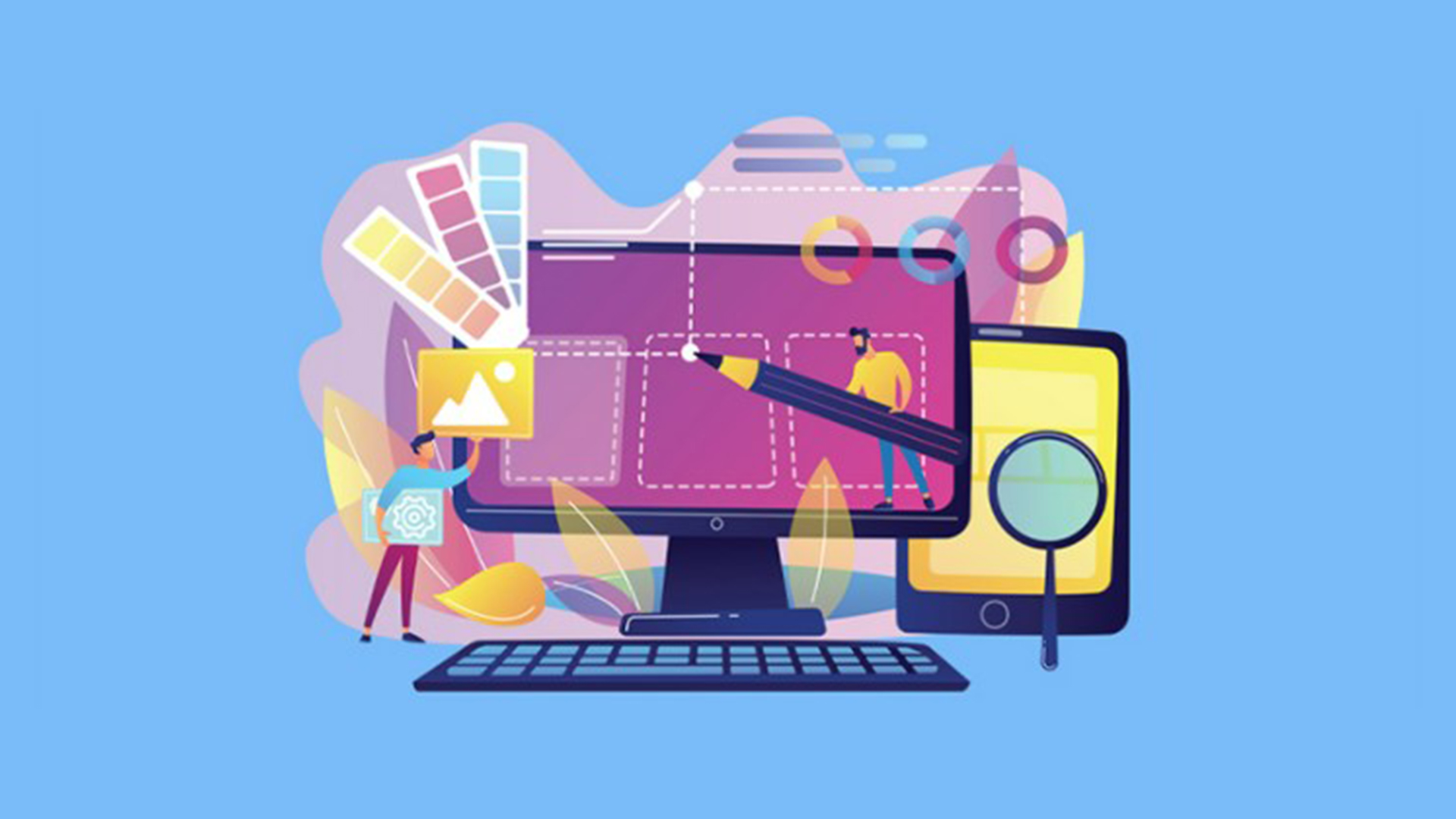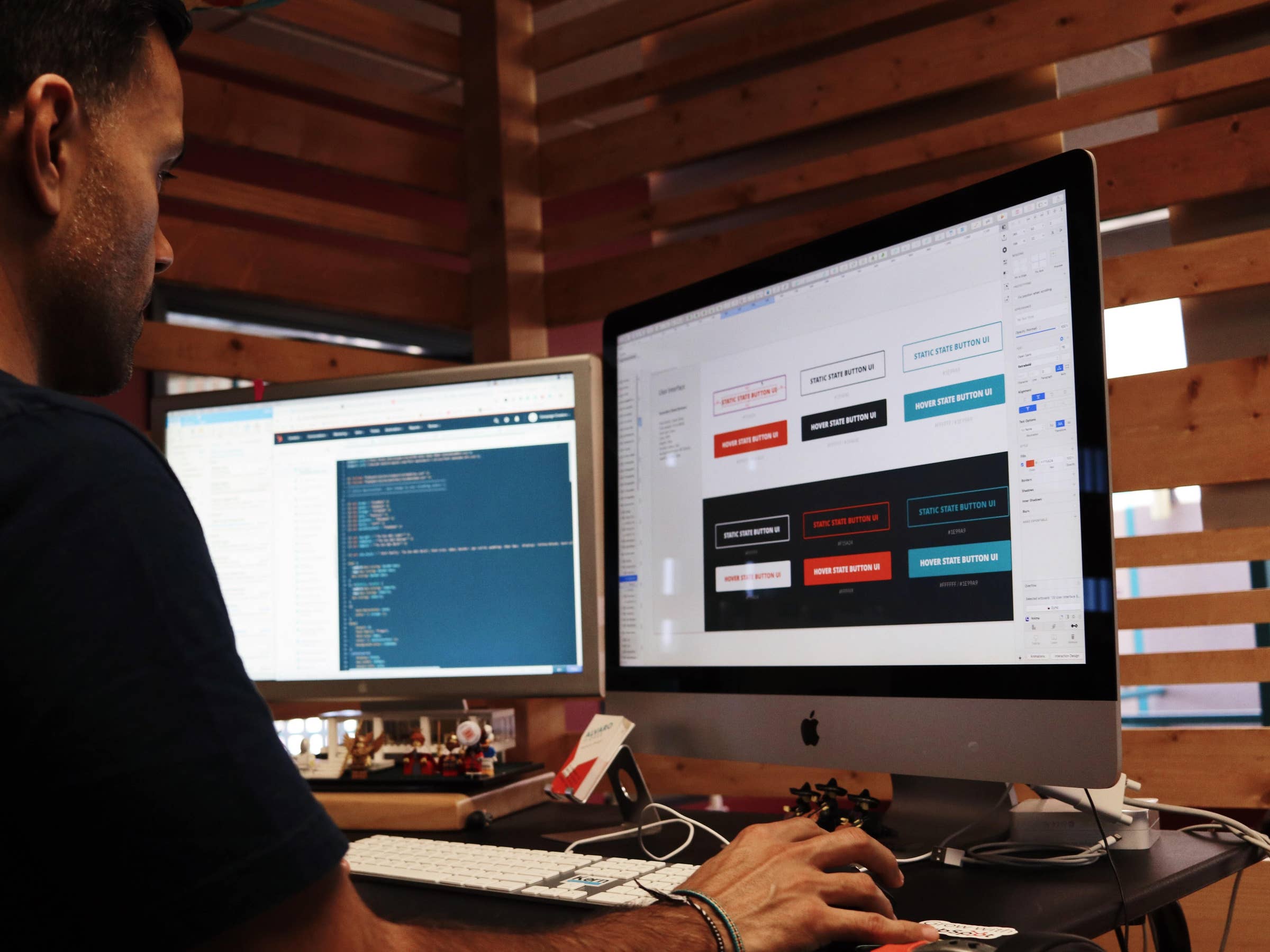All Categories
Featured
Table of Contents
- – Boxcar Studio - Wordpress & Drupal Web Design ...
- – Custom Website Design And Marketing - Inmotio...
- – The Top 10 Most Important Elements Of A Websi...
- – Top Web Design Agencies Ranked - 2022 Reviews...
- – What Is Web Design, How To Do It Right And Be...
- – Web Design Service - Professionally Designed ...
- – Web Design Certificate - Web Development Cer...
- – Learn Responsive Design - Web.dev Tips and T...
- – Web Design Scholarship - Nyc Digital Marketi...
- – Modern Website Designs - Best Web Page Desig...
- – Otc Web Design Girdwood, Alaska - Web Design...
Boxcar Studio - Wordpress & Drupal Web Design ... - Ann Arbor Tips and Tricks:
Quick summary Functionality and the energy, not the visual style, figure out the success or failure of a site. Because the visitor of the page is the only individual who clicks the mouse and therefore chooses everything, user-centric style has established as a basic method for successful and profit-oriented web style - web design frederick md.
and the energy, not the visual design, identify the success or failure of a website. Considering that the visitor of the page is the only individual who clicks the mouse and therefore decides whatever, user-centric style has actually become a basic technique for successful and profit-oriented web design. After all, if users can't use a function, it might also not exist.
g. where the search box need to be put) as it has currently been performed in a variety of articles; rather we focus on the methods which, used properly, can lead to more sophisticated style choices and streamline the procedure of perceiving provided details. Please see that you might be interested in the usability-related articles we have actually published prior to: Concepts Of Good Site Style And Reliable Web Style Standards, In order to use the concepts appropriately we first require to comprehend how users interact with sites, how they believe and what are the fundamental patterns of users' habits.
Custom Website Design And Marketing - Inmotion Hosting Tips and Tricks:
Visitors glance at each brand-new page, scan some of the text, and click the very first link that catches their interest or vaguely resembles the thing they're looking for. In truth, there are large parts of the page they don't even look at. Many users look for something fascinating (or useful) and clickable; as quickly as some appealing prospects are found, users click.
If a page supplies users with premium content, they are willing to jeopardize the material with ads and the style of the website. This is the reason that not-that-well-designed websites with premium material gain a lot of traffic over years. Material is more vital than the design which supports it.

Users do not check out, they scan. Notice how "hot" areas abrupt in the middle of sentences. This is typical for the scanning procedure. Extremely easy principle: If a site isn't able to fulfill users' expectations, then designer failed to get his task done correctly and the business loses money. The greater is the cognitive load and the less instinctive is the navigation, the more prepared are users to leave the site and look for options.
The Top 10 Most Important Elements Of A Website Design Tips and Tricks:
Neither do they scan web page in a linear style, going sequentially from one website area to another one. Instead users satisfice; they pick the very first reasonable option. As quickly as they find a link that seems like it might lead to the goal, there is a great possibility that it will be immediately clicked.
It does not matter to us if we comprehend how things work, as long as we can use them. If your audience is going to imitate you're developing billboard, then style great signboards." Users wish to be able to manage their internet browser and rely on the consistent data discussion throughout the website.
If the navigation and site architecture aren't user-friendly, the variety of question marks grows and makes it harder for users to comprehend how the system works and how to obtain from point A to point B. A clear structure, moderate visual hints and easily recognizable links can assist users to discover their path to their goal.
Top Web Design Agencies Ranked - 2022 Reviews - Clutch.co Tips and Tricks:

Because users tend to explore sites according to the "F"-pattern, these 3 statements would be the very first elements users will see on the page once it is filled. The style itself is easy and intuitive, to comprehend what the page is about the user needs to search for the answer.
As soon as you have actually attained this, you can interact why the system is beneficial and how users can benefit from it. Don't Squander Users' Patience, In every task when you are going to provide your visitors some service or tool, attempt to keep your user requirements minimal.
Newbie visitors want to, not filling long web kinds for an account they may never use in the future. Let users check out the site and discover your services without requiring them into sharing personal data. It's not reasonable to require users to go into an e-mail address to evaluate the feature.
What Is Web Design, How To Do It Right And Best Skills - Rock ... Tips and Tricks:
Stikkit is an ideal example for an easy to use service which requires practically nothing from the visitor which is inconspicuous and reassuring. And that's what you want your users to feel on your website. Obviously, Termite requires more. However the registration can be done in less than 30 seconds as the form has horizontal orientation, the user does not even need to scroll the page.
A user registration alone is adequate of an obstacle to user navigation to cut down on incoming traffic. 3. Handle To Focus Users' Attention, As websites provide both fixed and dynamic content, some elements of the user interface draw in attention more than others do. Clearly, images are more appealing than the text just as the sentences marked as vibrant are more appealing than plain text.
Focusing users' attention to particular locations of the site with a moderate use of visual components can help your visitors to receive from point A to point B without thinking of how it in fact is supposed to be done. The less concern marks visitors have, the they have and the more trust they can develop towards the business the site represents.
Web Design Service - Professionally Designed Websites Tips and Tricks:
Make Every Effort For Function Direct exposure, Modern web designs are generally slammed due to their approach of assisting users with aesthetically appealing 1-2-3-done-steps, big buttons with visual effects etc. From the design perspective these components really aren't a bad thing.
The site has 9 primary navigation alternatives which are visible at the very first glance. The choice of colors might be too light, though. is a fundamental principle of successful user interface design. It doesn't truly matter how this is attained. What matters is that the content is well-understood and visitors feel comfy with the way they interact with the system.
com gets straight to the point. No charming words, no exaggerated declarations. Rather a price: just what visitors are trying to find. An optimal option for efficient writing is touse brief and concise phrases (come to the point as rapidly as possible), use scannable design (categorize the content, utilize multiple heading levels, utilize visual components and bulleted lists which break the circulation of uniform text blocks), use plain and unbiased language (a promotion does not require to sound like advertisement; give your users some sensible and unbiased reason that they need to use your service or stay on your website)6.
Web Design Certificate - Web Development Certificate Program Tips and Tricks:
Users are hardly ever on a site to enjoy the design; additionally, in many cases they are searching for the details in spite of the style - web design frederick md. Make every effort for simplicity rather of intricacy. From the visitors' perspective, the finest website style is a pure text, without any advertisements or additional material obstructs matching precisely the inquiry visitors utilized or the content they've been searching for.
Finch clearly provides the details about the website and offers visitors a choice of alternatives without overcrowding them with unnecessary material. 7. Don't Hesitate Of The White Space, In fact it's actually tough to overstate the significance of white space. Not just does it assist to for the visitors, but it makes it possible to perceive the information presented on the screen.
Complex structures are more difficult to read, scan, analyze and work with. If you have the choice in between separating two style sectors by a visible line or by some whitespace, it's typically much better to use the whitespace option. (Simon's Law): the better you manage to offer users with a sense of visual hierarchy, the much easier your content will be to view.
Learn Responsive Design - Web.dev Tips and Tricks:
The same conventions and rules must be used to all elements.: do the most with the least quantity of hints and visual elements. Clarity: all elements need to be designed so their significance is not unclear.
Conventions Are Our Pals, Standard style of website aspects does not result in a dull website. In reality, as they lower the discovering curve, the need to find out how things work. It would be an usability nightmare if all websites had different visual presentation of RSS-feeds. That's not that various from our routine life where we tend to get utilized to basic concepts of how we organize information (folders) or do shopping (placement of products).
understand what they're expecting from a site navigation, text structure, search positioning etc. A normal example from functionality sessions is to equate the page in Japanese (presuming your web users don't know Japanese, e. g. with Babelfish) and provide your usability testers with a task to find something in the page of various language.
Web Design Scholarship - Nyc Digital Marketing Agency Tips and Tricks:
Test Early, Test Frequently, This so-called TETO-principle ought to be applied to every web style job as use tests frequently offer into considerable issues and problems related to an offered design. Test not too late, not too little and not for the incorrect factors.
Some important points to keep in mind: according to Steve Krug, and screening one user early in the project is better than testing 50 near completion. Accoring to Boehm's first law, mistakes are most frequent during requirements and style activities and are the more pricey the later on they are gotten rid of.
That means that you develop something, test it, repair it and then check it once again. There may be issues which have not been found during the very first round as users were almost obstructed by other problems.
Modern Website Designs - Best Web Page Designers Tips and Tricks:

This holds for designers. After you've worked on a site for few weeks, you can't observe it from a fresh viewpoint any longer. You understand how it is developed and for that reason you know precisely how it works you have the knowledge independent testers and visitors of your site would not have.
It can be connected to other locations such as graphic style, user experience, and multimedia arts, but is more appropriately seen from a technological standpoint. It has actually become a big part of people's daily lives. It is difficult to envision the Internet without animated graphics, various styles of typography, background, videos and music.

During 1991 to 1993 the Web was born. Text-only pages might be viewed using a simple line-mode browser. In 1993 Marc Andreessen and Eric Bina, created the Mosaic internet browser. At the time there were several web browsers, nevertheless most of them were Unix-based and naturally text heavy. There had been no integrated technique to graphic design elements such as images or noises.
Otc Web Design Girdwood, Alaska - Web Design & Google ... Tips and Tricks:
The W3C was developed in October 1994 to "lead the Internet to its complete potential by developing common protocols that promote its advancement and guarantee its interoperability." This dissuaded any one company from monopolizing a propriety browser and programming language, which might have modified the effect of the Internet as a whole.
As this has actually happened the technology of the web has likewise moved on. There have likewise been significant changes in the way individuals use and access the web, and this has actually changed how sites are developed.
Learn more about Lovell Media Group LLC or TrainACETable of Contents
- – Boxcar Studio - Wordpress & Drupal Web Design ...
- – Custom Website Design And Marketing - Inmotio...
- – The Top 10 Most Important Elements Of A Websi...
- – Top Web Design Agencies Ranked - 2022 Reviews...
- – What Is Web Design, How To Do It Right And Be...
- – Web Design Service - Professionally Designed ...
- – Web Design Certificate - Web Development Cer...
- – Learn Responsive Design - Web.dev Tips and T...
- – Web Design Scholarship - Nyc Digital Marketi...
- – Modern Website Designs - Best Web Page Desig...
- – Otc Web Design Girdwood, Alaska - Web Design...
Latest Posts
Pueblo Web Design Tips and Tricks:
10 Principles Of Good Web Design - Smashing Magazine Tips and Tricks:
Web Design Software By Xara Tips and Tricks:
More
Latest Posts
Pueblo Web Design Tips and Tricks:
10 Principles Of Good Web Design - Smashing Magazine Tips and Tricks:
Web Design Software By Xara Tips and Tricks: